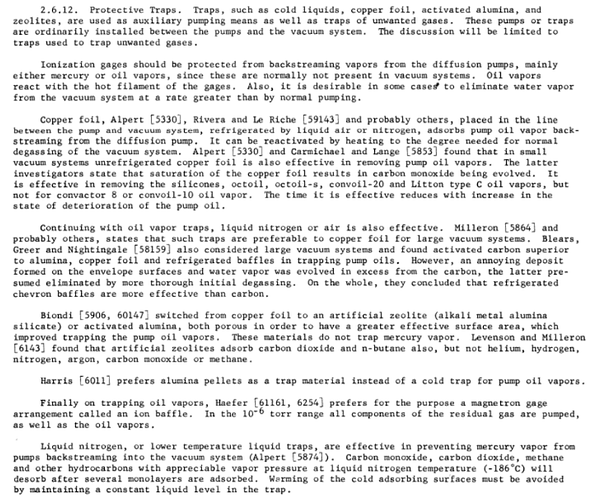this is intended to be a public wiki. Please feel free to edit!
ConFlat
The mechanics of conflat are discussed in Lutkiewicz and Rathjen 2008
Flanges made from aluminium are also available, using hardened coatings on the knife-edges, which are exclusively usable with aluminum gaskets. This is sometimes used for the greater thermal capacity. Unless there is a seriously compelling reason to, I would suggest avoiding aluminum gaskets.
In the case of aluminum . Copper gaskets have a work-hardening property that makes it retain a good seal preload even in the case of temperature fluctuations and baking.
In some areas at our facility, equipment (cameras, lights, etc) may be mounted using brackets to the outside of flanges using the flange circle’s bolts or studs. This is convenient as it does not require. However, for the reasons discussed below, great care must be taken when modifying this kind of mount. The distance . groove grabber.
Many . Metal-to-metal. leave some gap between the faces so any leaks can be re-sealed.
dd
gasket stays in the non-rounded punch face. ca
The forces involved in bringing some flanges metal-to-metal may exceed the yield strength of stainless steel bolts. See () for more information on this topic.
Reluctance to use anti-galling compounds for fear of contamination, seizing stainless fasteners is very common.
Copper gasket clips
gasket removal tool
Suppliers and manufacturers
kimball physics
To add
Vacuum hackers warning to samy
Bolts that show signs of deformation should be discarded. Some vacuum workers do not attempt to reuse 1.33" conflat flange screws because a significant number are distorted after one use.
Books
The Physical Basis of Ultrahigh Vacuum,
P.A. Redhead, J.P. Hobson, E.V. Kornelsen,
American Vacuum Society Classics,
American Institute of Physics, 1993
Foundations of Vacuum Science and Technology,
Edited J.M. Lafferty, John Wiley & Sons, 1998
Handbook of Accelerator Physics and Engineering, A. W.
Chao, M. Tigner, World Scientific, 1998
CAS CERN Accelerator School : Vacuum Technology,
Edited : S. Turner. CERN 99-05, 19 August 1999
Handbuch Vakuumtechnik, M. Wutz et. al, Vieweg,
Braunschweig/Wiesbaden, 2000
Journals:
VACUUM
Journal of Vacuum Science and Technology (A)
Nuclear Instruments and Methods (Section A)
http://www.ece.ualberta.ca/~schmaus/vacf/index.html Vacuum basics.
http://www.ece.ualberta.ca/~schmaus/vacf/vacsys.html How to operate a diffusion pump.
http://www.vacuumlab.com/articles.htm More advanced vacuum information.
http://shop.store.yahoo.com/vacuumshopper/oils.html Rotary vane and diffusion pump oils.
Definition Pressure Boundaries
[mbar]
Low Vacuum LV 103 − 1
Medium Vacuum MV 1 − 10−3
High Vacuum HV 10−3 − 10−9
Ultra High Vacuum UHV 10−9 − 10−12
Extreme Vacuum XHV < 10−12
2.1 Basic notions
2.1.1 Ideal Gas Law
A rarefied gas which obeys to the ideal gas state equation can be defined as ideal.
Table 2.1 Degrees of vacuum and their pressure boundaries from Lafferty




